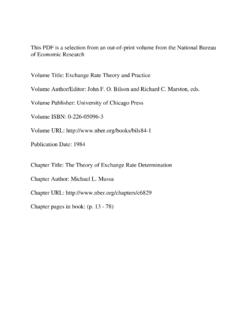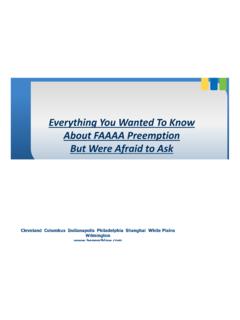Transcription of NATIONAL UNIVERSITY - Defense Technical Information …
1 NATIONAL Defense UNIVERSITY NATIONAL WAR COLLEGE The American Approach to Limited War Core Course Essay Bob Warrington/Class of 94 Core Course 2 Seminar H Bruce Harris/Bud Cole Dan Gaske NATIONAL Defense UNIVERSITY L~BRARY S?~-CIAL COLLECTIONS Report Documentation PageForm ApprovedOMB No. 0704-0188 Public reporting burden for the collection of Information is estimated to average 1 hour per response, including the time for reviewing instructions, searching existing data sources, gathering andmaintaining the data needed, and completing and reviewing the collection of Information .
2 Send comments regarding this burden estimate or any other aspect of this collection of Information ,including suggestions for reducing this burden, to Washington Headquarters Services, Directorate for Information Operations and Reports, 1215 Jefferson Davis Highway, Suite 1204, ArlingtonVA 22202-4302. Respondents should be aware that notwithstanding any other provision of law, no person shall be subject to a penalty for failing to comply with a collection of Information if itdoes not display a currently valid OMB control number. 1. REPORT DATE 1994 2. REPORT TYPE 3.
3 DATES COVERED 00-00-1994 to 00-00-1994 4. TITLE AND SUBTITLE The American Approach to Limited War 5a. CONTRACT NUMBER 5b. GRANT NUMBER 5c. PROGRAM ELEMENT NUMBER 6. AUTHOR(S) 5d. PROJECT NUMBER 5e. TASK NUMBER 5f. WORK UNIT NUMBER 7. PERFORMING ORGANIZATION NAME(S) AND ADDRESS(ES) NATIONAL War College,300 5th Avenue,Fort Lesley J. McNair,Washington,DC,20319-6000 8. PERFORMING ORGANIZATIONREPORT NUMBER 9. SPONSORING/MONITORING AGENCY NAME(S) AND ADDRESS(ES) 10. SPONSOR/MONITOR S ACRONYM(S) 11. SPONSOR/MONITOR S REPORT NUMBER(S) 12. DISTRIBUTION/AVAILABILITY STATEMENT Approved for public release; distribution unlimited 13.
4 SUPPLEMENTARY NOTES 14. ABSTRACT see report 15. SUBJECT TERMS 16. SECURITY CLASSIFICATION OF: 17. LIMITATION OF ABSTRACT 18. NUMBEROF PAGES 16 19a. NAME OFRESPONSIBLE PERSON a. REPORT unclassified b. ABSTRACT unclassified c. THIS PAGE unclassified Standard Form 298 (Rev. 8-98) Prescribed by ANSI Std Z39-18 The American Approach to Limited War Introduction Limited war has been a prominent feature in United States (US) military history. Past applications of limited military power in war have dramatically furthered US NATIONAL interests. Despite encouraging experiences with limited war from independence to the 20th century, its inherent equivocalities coupled with increasing apprehension over its costs and results have made this type of combat progressively less appealing to the American psyche.
5 Moreover, the primary pillar which supported its advisability after World War II--the presence of an adversary in the intemational system capable of devastating the US with nuclear weapons--has been undermined by the dissolution of the Soviet Union and the end of the cold war. This paper will analyze the particular historical circumstances of the American experience with limited war from early conflicts through the post-World War II period. It will compare the US perspective with principles of limited war described by military strategists, especially Carl von Clausewitz.
6 The paper will then examine how the evolution of American thinking about limited war has affected its usefulness as an instrument of US NATIONAL policy. It will conclude by looking at the implications of the post-Cold War intemational environment for American political and military strategies to deal with limited uses of military power. Throughout this paper, examples of America's limited war experiences will be cited to illustrate judgments that are offered. The paper is not, however, about those wars. It is intended to analyze the US attitude toward limited war and how these beliefs affect the relationship between this form of warfare and the pursuit of American political objectives.
7 Early Experiences with Limited War The concept of limited war escapes exact definition, but studies of the subject have traditionally focused on ends, means, and their relationship as the key factors in understanding this type of combat. Most writers have argued that a limited war occurs when its participants fight with limited means for limited objectives. Within this overall framework, two principles have been identified by theorists as critical to keeping a war limited. First, that ends determine means. Limiting political objectives is key to limiting the military means employed for those objectives.
8 Robert Osgood, in his seminal work on this subject, emphasizes this point when he writes, "The decisive limitation upon war is the limitation of the objectives of war. ''1 Clausewitz also advocates this principle when he writes, "As policy becomes more ambitious and vigorous, so will war, and this may reach the point where war attains its absolute form. ''2 The second principle is that the relationship between ends and means is proportional. This judgment can be traced to Clausewitz's original admonition that political goals will determine both the military objectives sought in a war and the amount of force they require.
9 Consequently, according to Clausewi~, "The smaller the penalty you demand from your opponent, the less you can expect him to try and deny it to you; the smaller the effort he makes, the less you need to make yourself. ''3 Early US experiences with limited war, however, varied considerably from these principles and produced a uniquely American perspective on the subject. American wars of the 18th and 19th centuries with foreign opponents were able to accomplish ambitious political objectives that required only limited outlays of military power. The rule of proportionality between political ends and military means became skewed, and the imbalance clearly favored America in terms of the political gains realized through force of arms.
10 US sacrifices were very slight and lacked proportionality--at least by a Clausewitzian standard--given the value of the political aims and the level of resistance such objectives would be expected to arouse in the enemy. Indeed, the wars fell outside Clausewi~'s two kinds of limited war: offensive war with a limited aim and defensive war: To cite the most formative examples from that period: In the American Revolution, the US sought the extreme political goal of independence. However, the military strategy it employed, the armed forces it fielded, and the amount of destruction and casualties the country sustained in the conflict were far less than such political aspirations would typically require under the rule of proportionality.















